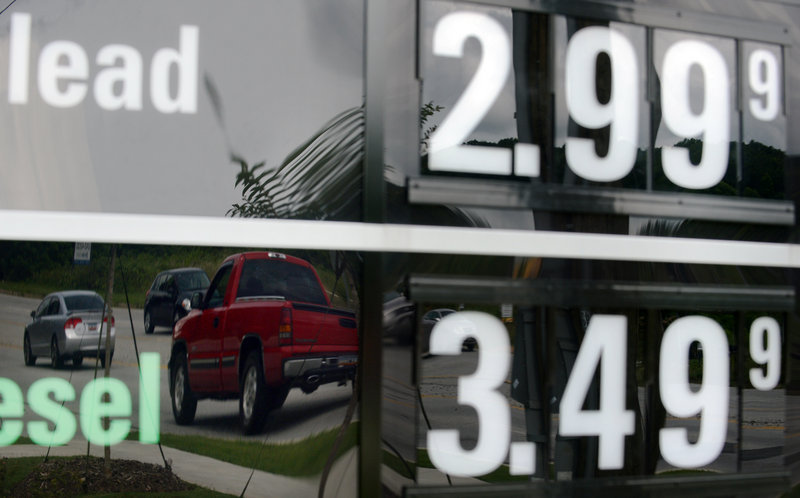NEW YORK – Gasoline prices are on a summer slide, giving U.S. drivers a break as they set out for the beach and other vacation spots for the Fourth of July.
The national average for a gallon has fallen for 21 days straight and is now below $3.50 for the first time since February. The reason: Oil prices have been relatively stable, and refineries are turning out more gasoline after completing springtime maintenance.
The drop may be interrupted temporarily because oil prices spiked Wednesday on fears that the turmoil in Egypt would disrupt the flow of crude in the Mideast. Analysts, however, don’t expect a sharp increase at the pump, because global oil supplies are ample and U.S. refineries are producing plenty of gas.
The national average price of a gallon is $3.48, according to AAA and OPIS. That is 16 cents below its post-Memorial Day high of $3.64 on June 10.
For much of the nation, the slide has been gradual. But for some drivers, especially in the Midwest, it has been a roller-coaster ride. Prices shot up there early last month because of refinery maintenance work and a fire, then plunged after the refineries ramped back up.
Patrick Francis, who owns a used-car lot in Toledo, Ohio, filled up his Volvo for $2.89 per gallon over the weekend as he was preparing for a family trip to Hilton Head, N.C. Just three weeks earlier, he was paying more than $4.
“I feel blessed,” he said. “It’s like a miracle.”
Tom Kloza, chief oil analyst at GasBuddy.com, predicted the national average will hover between $3.30 and $3.60 for the rest of the summer. That would be somewhat lower than the last two summers, when gasoline prices spent part of the season above $3.70 per gallon.
Oil prices shot up Wednesday above $101 per barrel, the highest since May 2012, as the crisis in Egypt deepened. Egypt is not a major oil producer but controls the Suez Canal, a major shipping lane for Middle Eastern crude.
While analysts are not expecting a resulting surge in gasoline prices, they could rise quickly if the Mideast unrest does disrupt oil supplies. Gas could also climb if a hurricane threatens the heart of the refining industry along the Gulf Coast.
This year’s early summer decline, while welcome, is smaller than the seasonal drops of the last two years, when gas prices also fell between Memorial Day and Independence Day. Gasoline is 15 cents more expensive than it was last year at this time.
Gas prices typically rise in late winter or early spring when refineries perform maintenance and switch from making winter gasoline blends to the more complex summer blends required for clean-air rules. When the nation’s refineries aren’t operating at full strength, supplies drop and prices rise. Once the maintenance is done, output rises and prices fall.
“When refineries go down it can create immediate and severe havoc,” Kloza said. “It’s a very shallow distribution system, quick to fill and quick to empty.”
Regional spikes and plunges are likely to happen more often in coming years. The number of U.S. refineries has shrunk by a quarter since 1993 to 143, but the nation’s refining capacity has grown 18 percent since then. The remaining refineries are getting bigger, so if one goes down, it’s a bigger shock to the system.
Send questions/comments to the editors.



Success. Please wait for the page to reload. If the page does not reload within 5 seconds, please refresh the page.
Enter your email and password to access comments.
Hi, to comment on stories you must . This profile is in addition to your subscription and website login.
Already have a commenting profile? .
Invalid username/password.
Please check your email to confirm and complete your registration.
Only subscribers are eligible to post comments. Please subscribe or login first for digital access. Here’s why.
Use the form below to reset your password. When you've submitted your account email, we will send an email with a reset code.